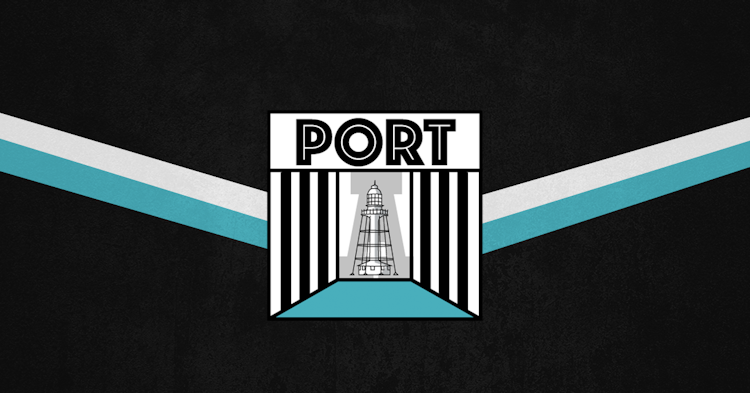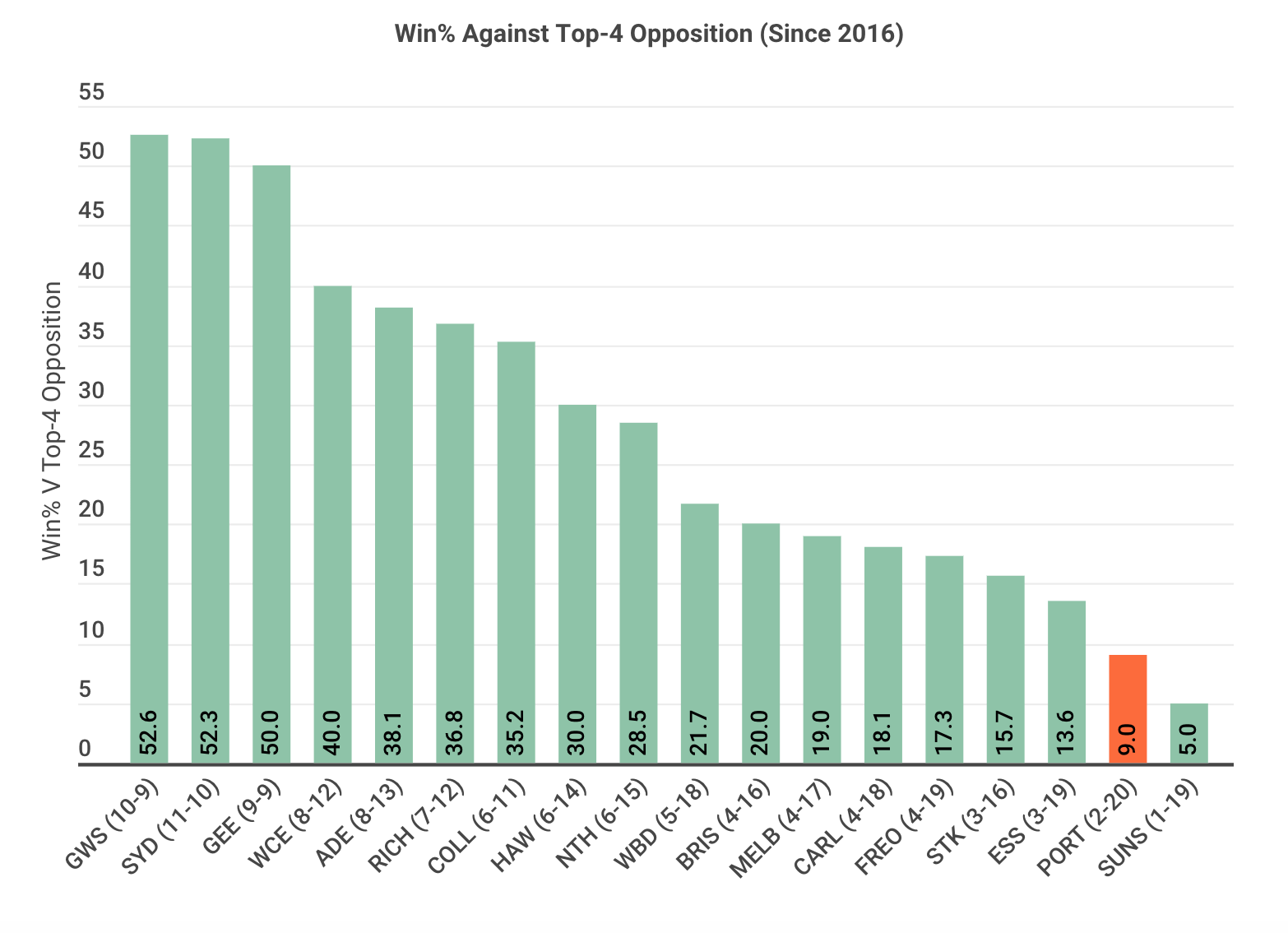Port Adelaide: Paper Tigers or A Genuine Force?
Last updated: Jul 9, 2020, 3:02AM | Published: Jul 8, 2020, 11:53PM
Port Adelaide has always been painfully easy to believe in.
Their best football is breakneck and bruising, a brand that seems like it would hold up deep into finals.
They obliterate contests with their big bodies and spread from them at pace, kicking to a classical power forward with skillful, weaving crumbers at his feet. The back six you just kind of put to the side, and rationalise as much of it as you can.
But gaps slowly appear, even in the midfield and forward line, and the rationalisation has to extend there too. Against quality opposition, why do the forwards never seem to have any space? When the game slows down, why can't half the midfielders hit a target?
What you're left with, after you've gone through all the complicated steps of loving and un-loving Port Adelaide, is the realisation that this is a fit, tough, big team, that outside of being fit, tough and big, doesn't have that much of an idea- or the skills or vision to execute towards the idea they might have had.
Their brutal brand bludgeons lesser teams but becomes self-reflexively brutal when playing the best teams. From 2016-2020 Port have played 22 games against top-4 opposition and won just twice.
 In these games, there are two recurring themes, both of which surfaced against Brisbane on Saturday
night. When the best teams go on a run, Port loses its collective mind, and when space gets cramped, Port doesn’t really have a plan.
In these games, there are two recurring themes, both of which surfaced against Brisbane on Saturday
night. When the best teams go on a run, Port loses its collective mind, and when space gets cramped, Port doesn’t really have a plan.
Brisbane's second quarter blitz, which extended into the early third quarter, was magnificent, and left Port totally clueless.
Amid the surge, Port players were simply dazed, barely in their own bodies, watching the Lions run past them and through them, and jump above them, over and over again, as though it were a bad dream, which it was, but it was reality as well.
Charlie Dixon was getting tackled and dispossessed by Jarryd Lyons, and Tom Jonas - the steady hand - gave away panicked free kicks. Sam Powell-Pepper looked like he didn't know what planet he was on.
Ken Hinkley looked every bit as lost as his players, with his eyes nervously darting around during the onslaught, as though he were waiting for someone mystical to walk in and pass him a sheet that contained all the answers, to life and to beating Brisbane.
Port had a handle on the game early, controlling stoppages, but didn't convert their chances, though few of them were high quality. Their handle on the game then slipped away mightily, and Brisbane's five goals in nine minutes at the start of the second quarter was the most breathtaking burst of the season. The burst didn't really end until five minutes into the third term, when Dan McStay mercifully failed to extend Brisbane's lead to 72-19.
During Brisbane's wave, the Lions were harder, faster, cleaner and, importantly, taller. They played with brilliant, almost telepathic connection, where all the chains and links made perfect sense. Brisbane played the game knowingly, in total control, toying with Port, like Lionel Messi one-on-one with a petrified keeper.
This demolition, in itself, is not proof that Port Adelaide are the same old paper tigers, but the signs were troubling. The defence completely self-combusted, unable to absorb pressure, with the dam walls caving in and everyone running for dear life instead of sticking around to protect the establishment. Port similarly lost games last year to rapid blitzes by Collingwood, Brisbane and North Melbourne, where damage control went AWOL.
When space disappeared in the forward line - which, with an excellent coach and the game's best defender, it was bound to against Brisbane - Port needed to lower the eyes and kick delicately. The midfield may just not have it in them to do this - there is nothing delicate about the games of Tom Rockliff, Ollie Wines and Sam Powell-Pepper. Travis Boak is not an exquisite user by foot either, nor is Brad Ebert, and Steven Motlop doesn't get enough of the ball. Robbie Gray is suddenly 32 and, while eternally full of class, isn't accumulating or hitting the scoreboard.
 It is not all so bleak. Port crushed their first four opponents and then came up against a team,
for now at least, behaving like a juggernaut.
It is not all so bleak. Port crushed their first four opponents and then came up against a team,
for now at least, behaving like a juggernaut.
If teams are off, Port's size, strength and running will devour them, as the devoured Eagles found out. The team also has more skilled users than it has for some time, with Kane Farrell a wonderful kick, and Connor Rozee and Zak Butters dynamic with ball in hand. Forgiving Saturday's hopeless context, Charlie Dixon is in the best form of his career.
 RELATED: Explore our Player Ratings and DNA Webs.
RELATED: Explore our Player Ratings and DNA Webs.
With a bit more flare in the ranks, Port's build-up play out of defence has grown more creative, with looping forward handballs to free men out of defensive 50 and short (on the mark) kicks into the corridor a fixture in the team's transition.
But there is still that jumpy defence, and that jumpy team. Until the defence gets more height and more quality, and the midfield injects some more fluent ball users, one suspects that Port will suffer from the same old problems- even if they aren't the same old team.
Did you enjoy this article? Join our free mailing list to get the best content delivered straight to your inbox, or join the conversation by leaving a comment below or on the Stats Insider Twitter or Facebook page.



